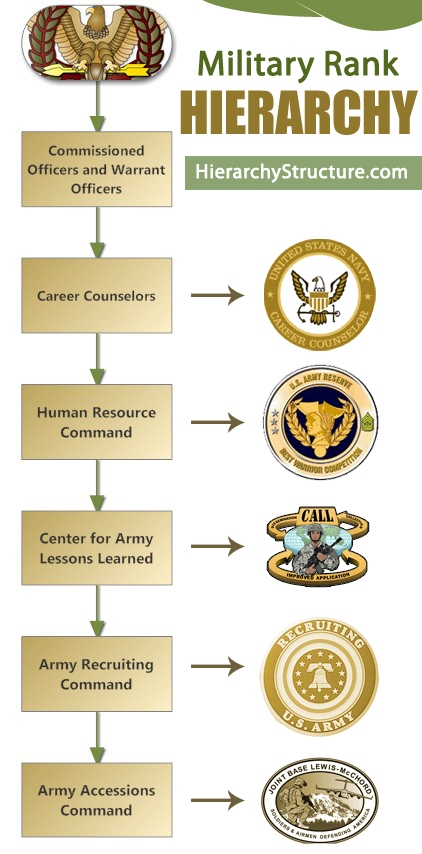Military rank hierarchy can be referred to as a hierarchical system in which the relationships between the various personnel are being demonstrated. It is an organized way of leveling the officers, starting from the higher ranks towards the lower ranks. The formations of the military ranks are significant in the context that, with the increase in number of associated military organizations and the advancement of the various military operations, the whole process or the scenario has become more and more complex gradually. So, in order to simplify the system, there is a need for an effective ranking system and therefore, the military rank hierarchy has been built.

This hierarchy is very useful in a successful coordination between the different levels of military officers and thereby increases the efficiency of the military organizations in the protection of the country.
In this particular article, we will discuss about the generalized military ranks that are prevalent in the organizations. We will discuss in details about their job roles and significance in the military forces.
Commissioned Officers and Warrant Officers:
The officer ranks in the military consist of the commissioned officers and the warrant officers. These ranks are the highest in the military. The presidential commissions are being held by these officers and they are confirmed at their ranks by the Senate.
The Warrant officers hold warrants from their service secretaries and are expert in certain specific military technologies. The warrant officers receive commissions from the president and act as direct representatives of the presidents.
- Career Counselors: The career counselors are experts dealing in all the major aspects of army life such as reenlistment, education benefits, reclassification etc. They fall under the category of non-commissioned officers. They are highly trained and function as personal agents on behalf of the department of Army. The career counselors serve all the soldiers.
- Human Resource Command: The human resource command or HRC provides full range of human resource management to the soldiers, veterans, army families and the retirees. The human resource personnel manage large number of aspects such as promotions, appointments, awards, benefits, retirement etc.
- Center for Army Lessons Learned: The center for Army Lessons Learned or CALL, collects and analyzes data from the current and past army operations and events; and produces materials for the students, staffs and commanders.
- Army Recruiting Command: The recruiting command recruits volunteers to meet the needs of the organization. They also provide training to the volunteers as per need.
- Army Accessions Command: The Accessions Military command provides integrated control of initial military training for the army officer, warrant officer and the enlisted forces.
The military rank hierarchy in different countries differs according to the particular nationalized structure, rules and regulations. The ranks are also classified on another basis as permanent rank, acting rank, temporary rank, local rank and brevet rank. These are explained as follows:
- Permanent rank: It is a fully paid and confirmed rank.
- Acting rank: This rank is normally for a short period of time, when the permanent rank holder is absent due to certain cause.
- Temporary rank: This rank is usually granted for a specific mission on a contractual basis.
- Local rank: It is also a temporary rank and is restricted to a specific location.
- Brevet rank: This rank is usually used to reduce costs and time of need.
